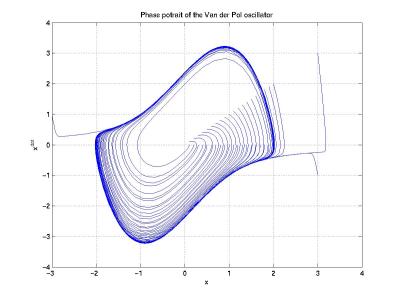Phase space
|
|
Phase space is a useful construct in mathematics and physics to demonstrate and visualise the changes in the dynamical variables of a system. The resulting plot, of position and momentum variables through time, is sometimes called a phase diagram. This term, however, is more usually reserved in the physical sciences for something else: the diagram showing the various regions of stability of the thermodynamic phases of a chemical system, as a function of pressure, temperature and composition.
Every degree of freedom or parameter of the system is represented as an axis of a multidimensional space. For every possible state of the system, or allowed combination of values of the system's parameters, a point is plotted in the multidimensional space. Often this succession of plotted points is analogous to the system's state evolving over time. In the end, the phase diagram represents all that the system can be, and its shape can easily elucidate qualities of the system that might not be obvious otherwise. A phase space may contain very many dimensions, For instance a gas containing many molecules may require a separate dimension for each particle's x, y and z positions and velocities as well as any number of other properties.
In classical mechanics the phase space co-ordinates are the generalised co-ordinates qi and their conjugate generalised momenta pi. The motion of an ensemble of systems in this space is studied by classical statistical mechanics. The local density of points in such systems obeys Liouville's Theorem, and so can be taken as constant. Within the context of a model system in classical mechanics, the phase space coordinates of the system at any given time are composed of all of the system's dynamical variables. Because of this, it is possible to calculate the state of the system at any given time in the future or the past, through integration of Hamilton's or Lagrange's equations of motion. Furthermore, because each point in phase space lies on exactly one phase trajectory, no two phase trajectories can intersect.
For simple systems, such as a single particle moving in one dimension for example, there may be as few as two degrees of freedom, (typically, position and velocity), and a sketch of the phase portrait may give qualitative information about the dynamics of system, such as the limit-cycle of the Van der Pol oscillator shown in the diagram.
Here, the horizontal axis gives the position and vertical axis the velocity. As the system evolves, its state follows one of the lines (trajectories) on the phase diagram.
A classic example of a phase diagram from chaos theory is the Lorenz attractor.

